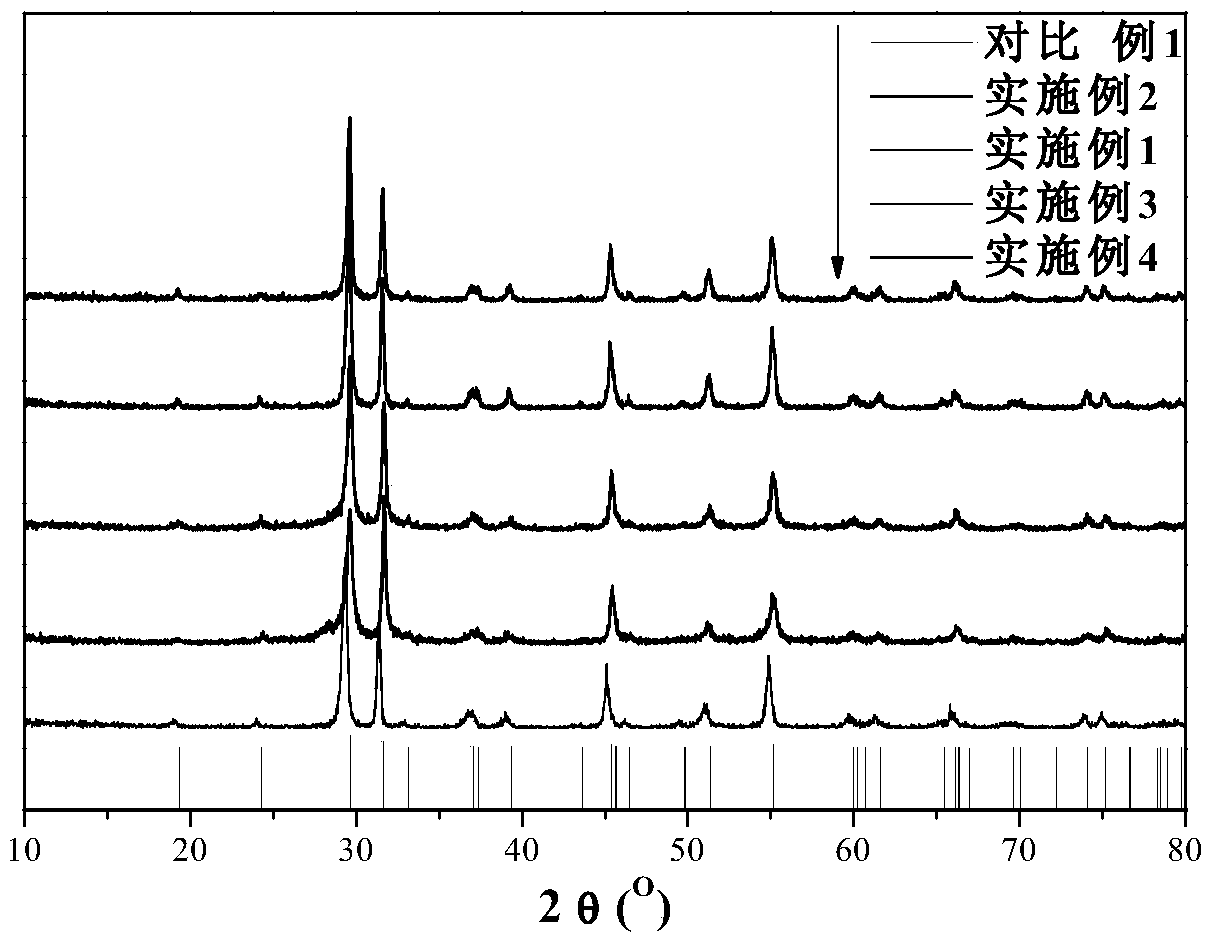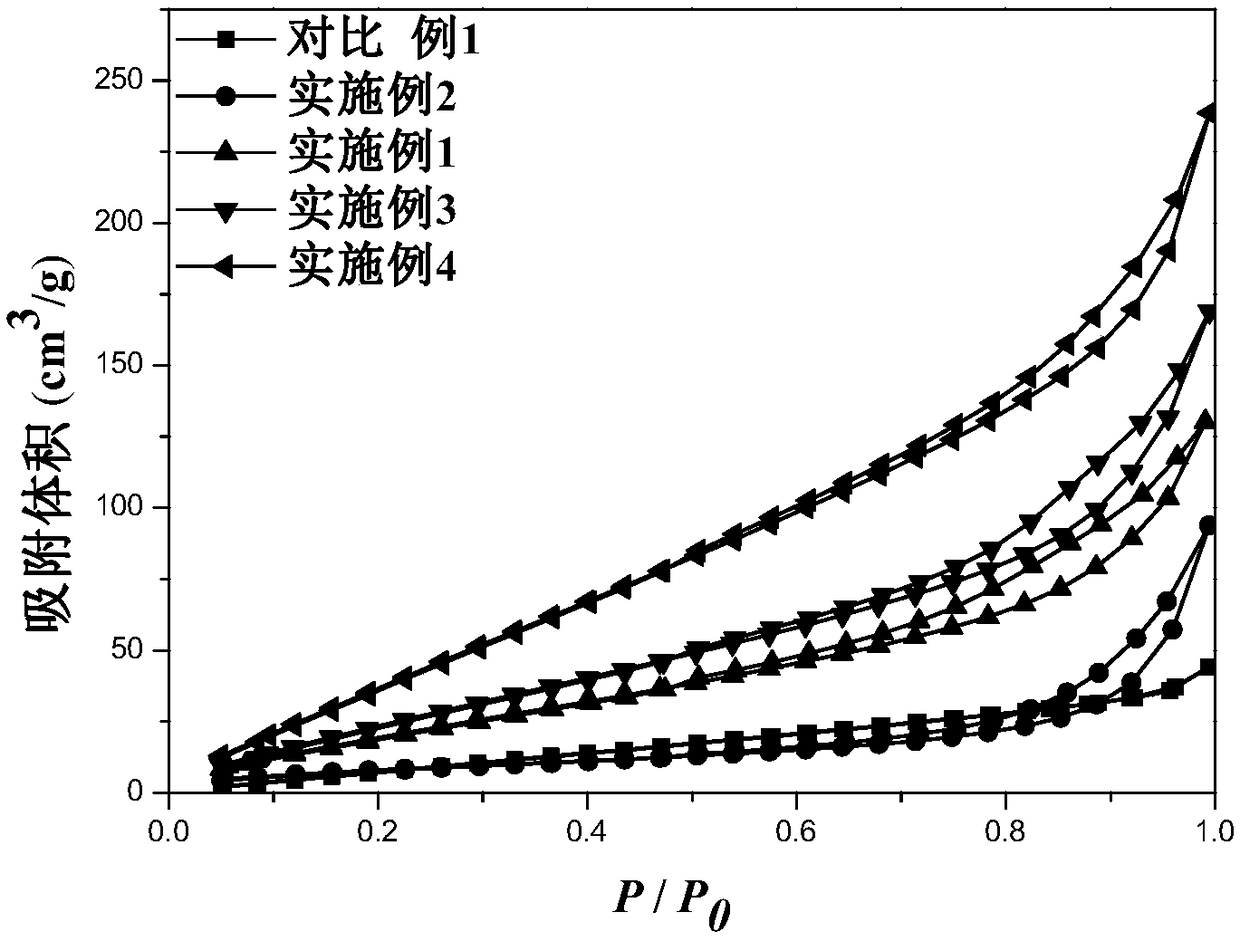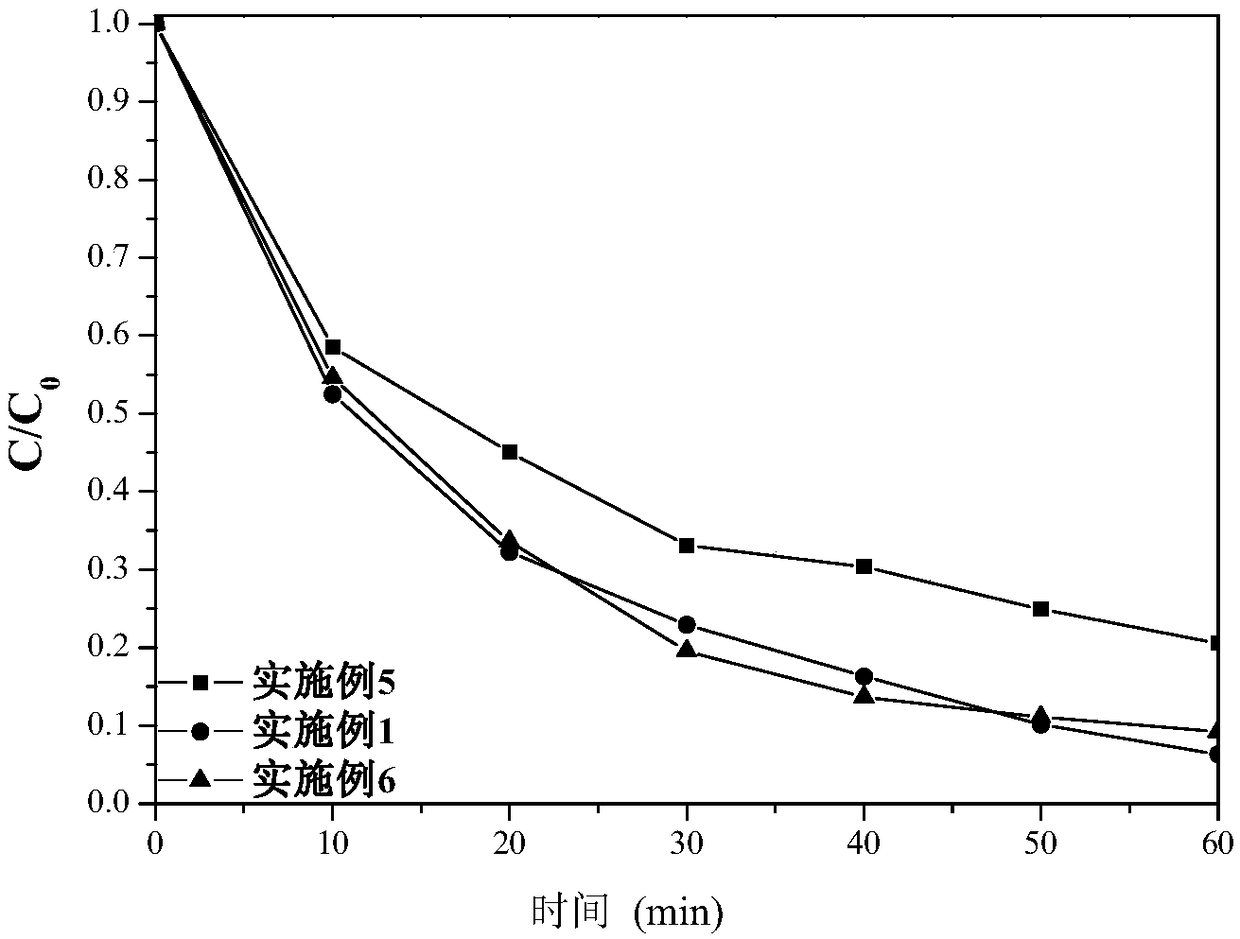A kind of preparation method and application of bioi-reduced graphene composite photocatalyst
A catalyst, graphene technology, applied in chemical instruments and methods, botanical equipment and methods, physical/chemical process catalysts, etc., can solve problems such as unfavorable tight binding, and achieve excellent antibacterial activity, good dispersion, and simple preparation method. workable effect
- Summary
- Abstract
- Description
- Claims
- Application Information
AI Technical Summary
Problems solved by technology
Method used
Image
Examples
Embodiment 1
[0044] Mix 1 g of commercially available graphene with 1 g of NaNO 3 Dissolve in 40mL H 2 SO 4 , stirred for one hour under ice bath, then added 5g KMnO 4 Stir for 48 hours. Add 100mL 5wt% H 2 SO 4 The solution was then stirred at 60 °C for 2 hours and 10 mL of 30 wt% H was added 2 o 2 and 1.0L deionized water. The precipitate was first washed with 5mol / L HCl, and then washed to neutrality with ultrapure water (the supernatant taken out was mixed with BaCl 2 reaction without precipitation), then put into the refrigerator to freeze for 24 hours, and then vacuum freeze-dry to obtain oxidized graphene. Weigh 0.12g Bi(NO 3 ) 3 ·5H 2 O was dissolved in 5.0mL ethylene glycol and 35mL isopropanol mixed solution, 0.146g ionic liquid C 10 h 19 IN 2 Dissolve in the above system and stir vigorously for 1.5 hours. At the same time, 20 mg of the above graphene was added to 20 mL of ethanol and sonicated for 1 hour to obtain a homogeneous solution of graphene flakes, which wa...
Embodiment 2
[0049] Change the amount of GO to 10 mg, and the rest of the content is the same as that described in Example 1 to obtain the visible light catalyst of this example. figure 1 The XRD spectrum of this example shows that the obtained BiOI is a pure tetragonal BiOI crystal (JCPDS 10-0445), and no impurities are formed. The specific surface area of the present embodiment is 42m 2 / g. Figure 6-Figure 7 This example has a certain catalytic activity in the catalytic degradation of methyl orange under visible light. Figure 8 In this example, under visible light, it has a certain photocatalytic killing performance on Acinetobacter baumannii.
Embodiment 3
[0051] Change the amount of GO to 30 mg, and the rest of the content is the same as that described in Example 1 to obtain the visible light catalyst of this example. figure 1 The XRD spectrum of this example shows that the obtained BiOI is a pure tetragonal BiOI crystal (JCPDS 10-0445), and no impurities are formed. The specific surface area of the present embodiment is 139m 2 / g. Figure 6-Figure 7 This example has a certain catalytic activity in the catalytic degradation of methyl orange under visible light. Figure 8 In this example, under visible light, it has a certain photocatalytic killing performance on Acinetobacter baumannii.
PUM
| Property | Measurement | Unit |
|---|---|---|
| specific surface area | aaaaa | aaaaa |
| specific surface area | aaaaa | aaaaa |
| size | aaaaa | aaaaa |
Abstract
Description
Claims
Application Information
 Login to View More
Login to View More - R&D Engineer
- R&D Manager
- IP Professional
- Industry Leading Data Capabilities
- Powerful AI technology
- Patent DNA Extraction
Browse by: Latest US Patents, China's latest patents, Technical Efficacy Thesaurus, Application Domain, Technology Topic, Popular Technical Reports.
© 2024 PatSnap. All rights reserved.Legal|Privacy policy|Modern Slavery Act Transparency Statement|Sitemap|About US| Contact US: help@patsnap.com










